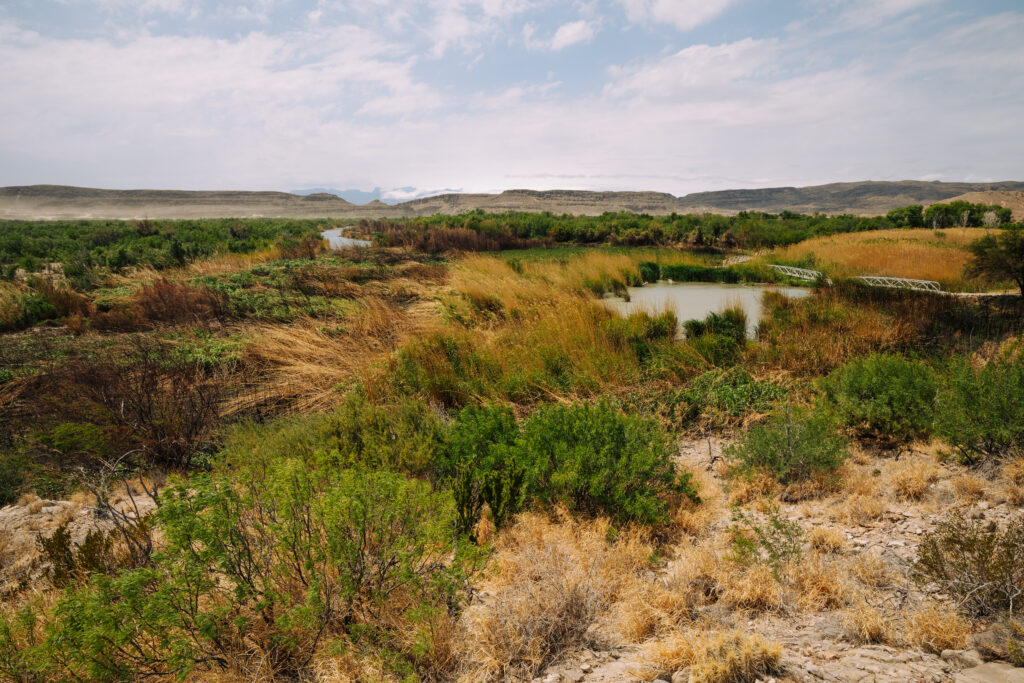
Big Bend National Park – Background
Big Bend National Park is an absolute hidden gem in the United States National Park system. Big Bend National Park is located along the “Big Bend” of the Rio Grande River defining the border between West Texas and Mexico for 118 miles. The Rio Grande cutting through the Chihuahuan Desert created a diverse ecosystem of rivers, desert and mountains. Given its remote location, approximately 200 miles from the closest airport (Midland/Odessa) which is a three-to-four-hour drive, Big Bend National Park attracts far fewer annual visitors compared to many of the most popular national parks. For those travelers desiring scenic hikes, starry nights, and the beauty of an incredibly large national park without the crowds, Big Bend is the park for you. However, given the difficulty of getting to the park I highly recommend spending three days in the park to maximize your trip.
Travel
The isolated nature of Big Bend National Park is definitely a positive once you’re in the park, but it definitely makes accessing the park something you need to carefully plan and consider. There is no public transport to take you to the park, and there is no public shuttle or transportation within the park itself. Given the lack of public transport or shuttle service within the park, and the distance between sites in the park itself, it is certainly a park you will need vehicle transport to fully enjoy. I highly recommend that if you are renting a car, you spend the money to get a car with 4WD or AWD to easily manage the unpaved and rocky roads that make up many of the paths to Big Bend’s more secluded locations: extra points if you’re able to secure a vehicle with high clearance to avoid bottoming out at any point (think Jeeps and other SUVs).
Keep in mind that there is significant distance between towns from any of the airports listed below as you get closer to the park. Ensure you have plenty of gas, food, and water throughout your drive to avoid any unexpected circumstances. I highly recommend avoiding this trip with an electric vehicle as there are no charging stations within 130 miles of the park. It is easier to plan your groceries ahead of time; however, the park does have camp stores and there are some small stores outside of the park but remember that due to the remote location price may be higher and supply and selection is likely to be lower.
Airports – Midland/Odessa (235 miles), El Paso (330 miles), San Antonio (370 miles)
Lodging
As has been mentioned multiple times, Big Bend is a large, remote national park. It takes sufficient time to get around the park. So, you may be thinking: “Where are the best lodging options in the park?” Unfortunately, options in the park itself are a bit limited. There are 3 main campgrounds if you’re bringing a tent or trailer, or the Chisos Mountain Lodge in the center of the park for a motel-style stay with attached store and restaurant as well as the Chisos Mountains visitor center. Outside of the park the options are too plentiful to list, but I’ll do my best to include some of the big hitters.
Inside the Park
Chisos Mountain Lodge –
The only true lodging within Big Bend National Park, Chisos Valley lodge is a no fanfare but solid option for travelers looking to stay within the park with easy access to all the main attractions in the park. Chisos Mountains lodge has a full restaurant serving lunch and dinner as well as a full service bar. The rooms themselves are somewhat bare bones with no televisions, phones, or WIFI: however, WIFI is available in the gift shop, patio and visitors center.
https://www.chisosmountainslodge.com/lodging
Camping –
There are four campsites in Big Bend national Park, all requiring reservations ahead of time.
One Concession Campground: Rio Grande Village RV Park
Three National Park Service Campgrounds: Chisos Basin Campground (located in the center of the park in the Chisos Mountains), Rio Grande Village Campground (located near the Rio Grande on the east side of the park), and Cottonwood Campground (located near the Rio Grande on the west side of the park)
Outside of the Park
Terlingua
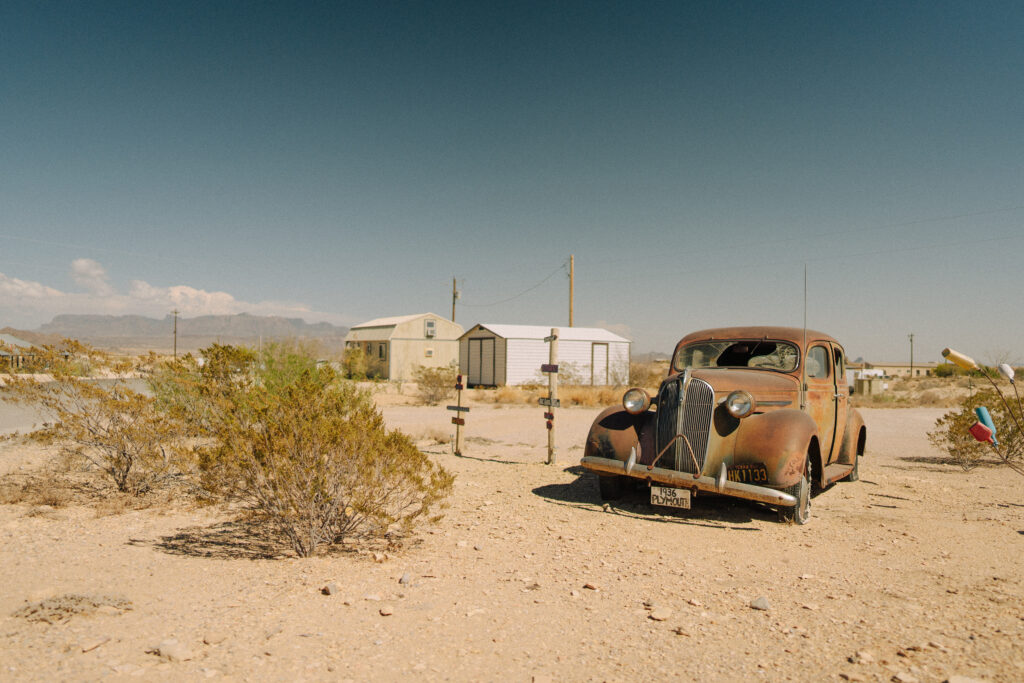
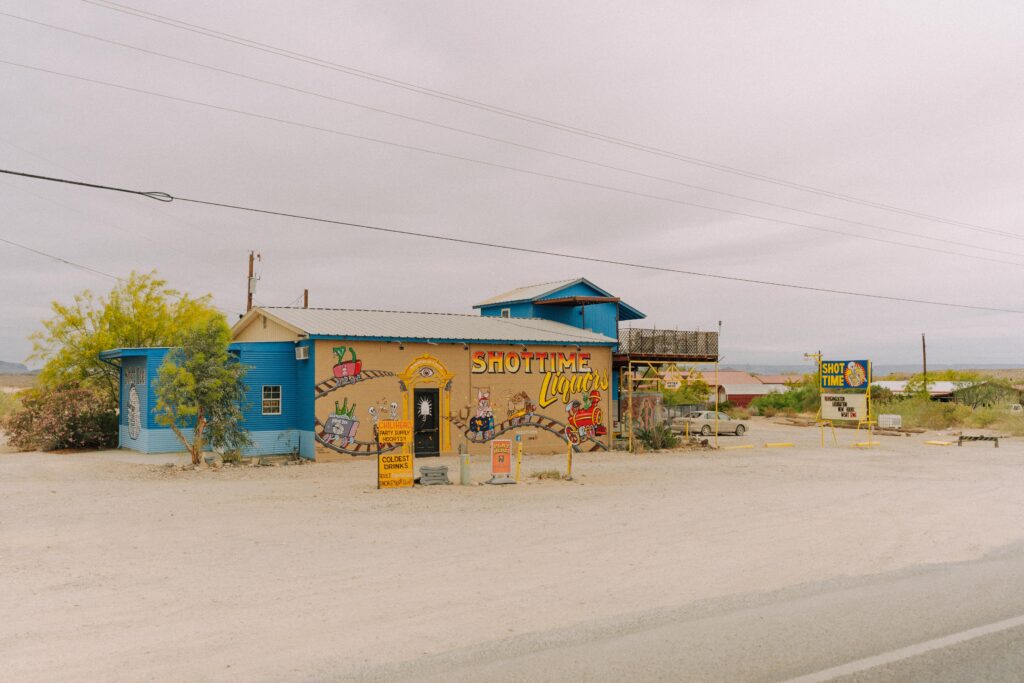
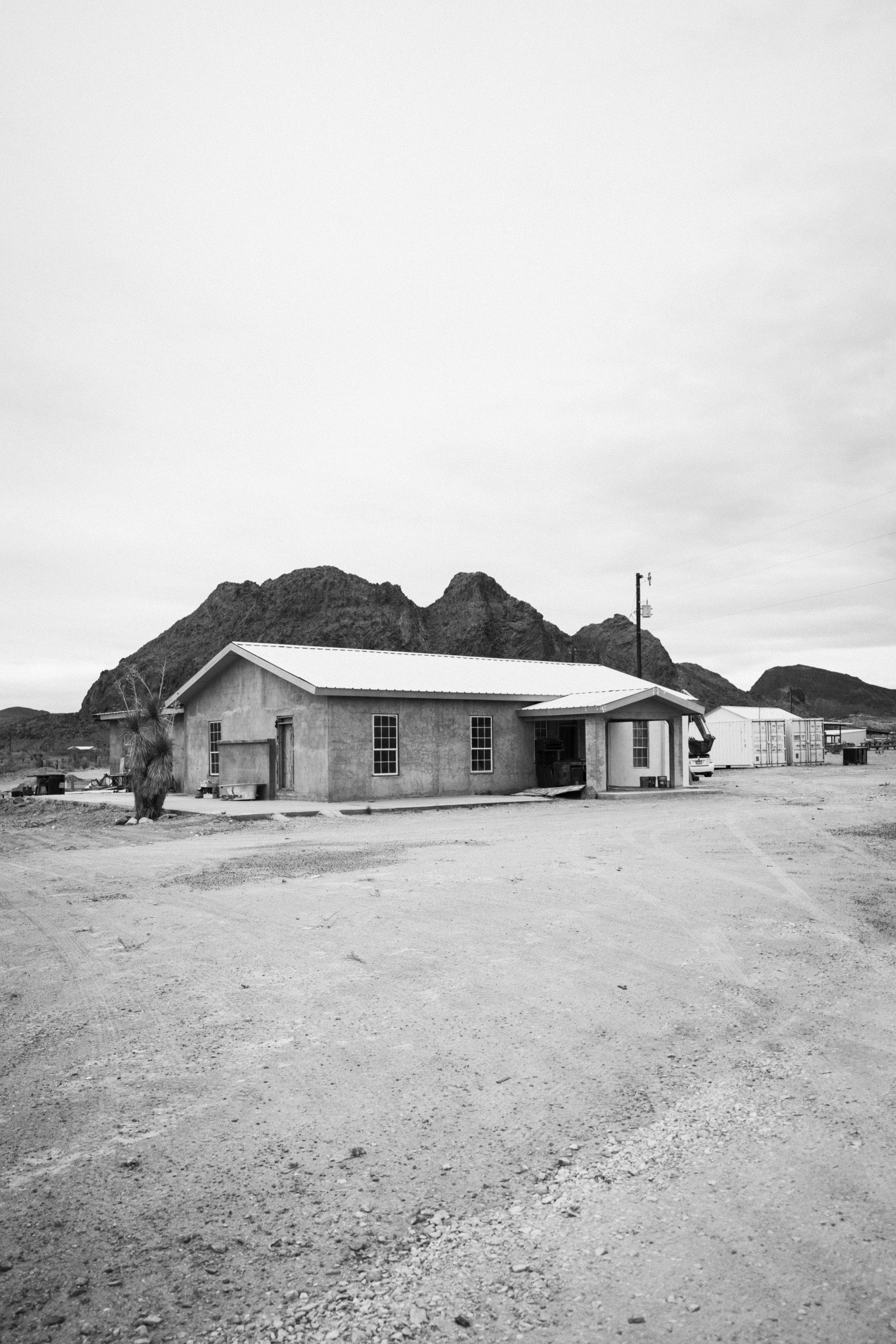
The Terlingua Ghost town only has a population of a few hundred, and staying here is an incredibly unique experience. While there are endless unique lodging situations in and around Terlingua, I recommend staying where my wife and I did: La Posada Milagro Guesthouse.
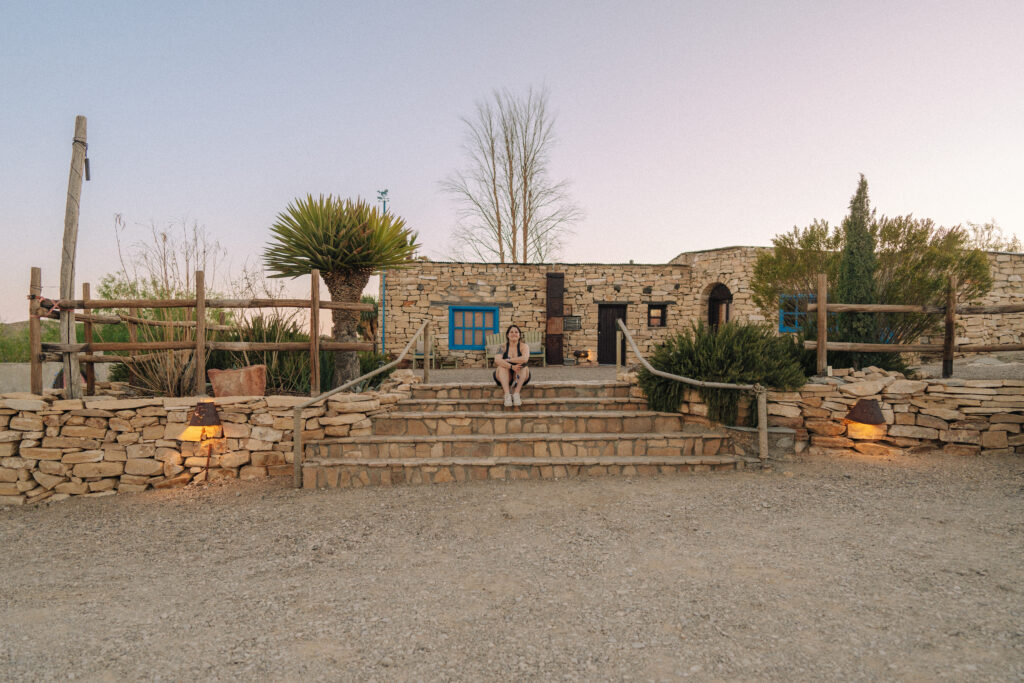
On site, La Posado Milagro has an excellent quick service restaurant and café that I highly recommend before your early morning excursions. There is also a Taqueria in close walking distance where you can enjoy tacos and a fresh Mexican coke. You can also end your night with dinner and drinks within a short walk to the famous Starlight Theatre.
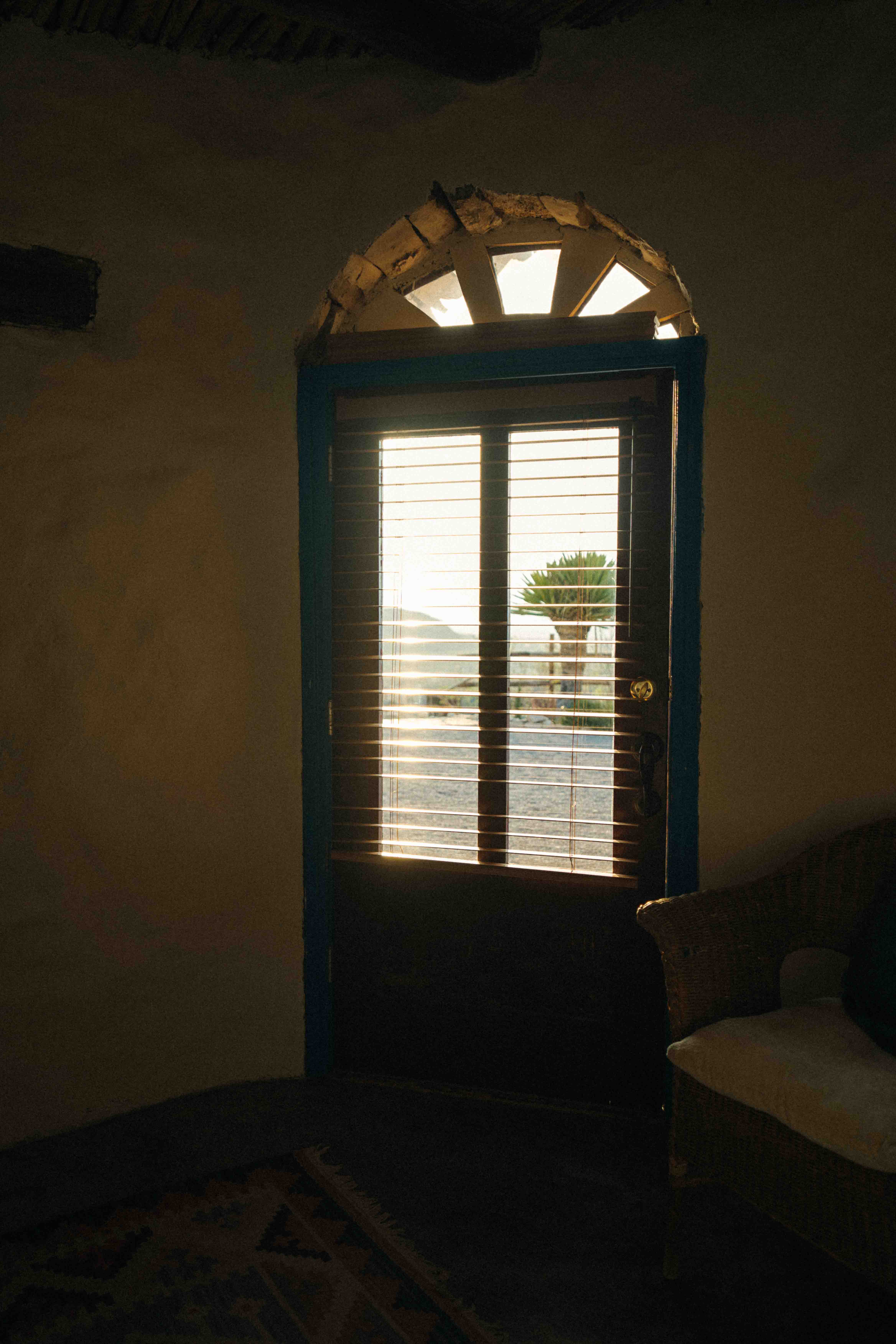
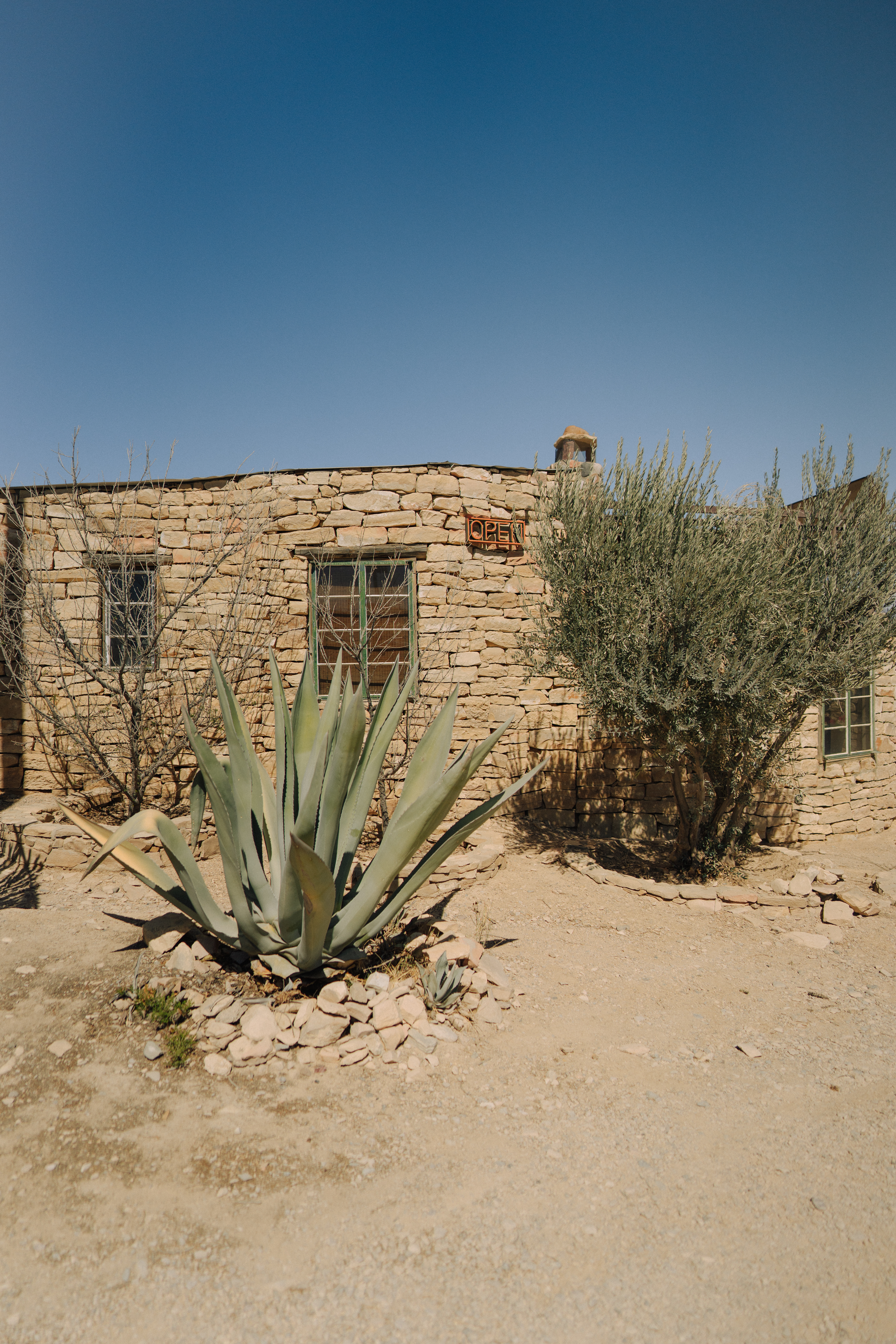
Marathon
Marathon is a quaint beautiful town of less than 1000 approximately 40 miles north east of the park. This is still a reasonable drive into the park. One of the highest rated facilities to stay in Marathon is the historic Gage Hotel. The gage offers unique accommodations in a luxury setting with phenomenal dining and one of the most famous bars in the region. While I myself have never stayed, it is certainly worth considering for your adventure.
Lajitas
Located about 20 miles west of Big Bend National Park, famous for their golf course… and their former mayor, Clay Henry III a ”beer drinking goat,” Lalitas Golf Resort is a green gem in the middle of the desert. If you are looking to stay in style, the Lajitas golf resort offers a beautiful pool, elegant large suites, and a multitude of activities. You can zipline, take a one way guided canoe trip down the Rio Grande, or horseback throughout the desert. When we went to Big Bend, we began looking for lodging around 3 months prior to leaving and there was no remaining availability at the resort so be sure to book early
Itinerary
Conveniently Big Bend National Park is divided into three regions: Chisos Basin, Rio Grande Village, and The Ross Maxwell Scenic Trail. Spending a day in each section of the park is sufficient time to explore all the “must see” items in each area. There are certainly a few items outside of each of these regions of the park that are worth exploring if more time is available, but for the vast majority of people this 3 day itinerary is an ideal exploration! The following is how my wife and I spent our 3 day trip in April!
Day 1: The Rio Grande Village
Depart your lodging in Terlingua and head towards Panther Junction stopping first at Dugout Wells. Dugout Wells is a now abandoned “cultural center.” In the early 1900s this area held a school house, and attracted families from the surrounding area. There are remnants of the schoolhouse, an abandoned windmill, and multiple signs explaining the history of the area. The area contains a short nature trail of about 0.5 miles and makes a great start to the day.
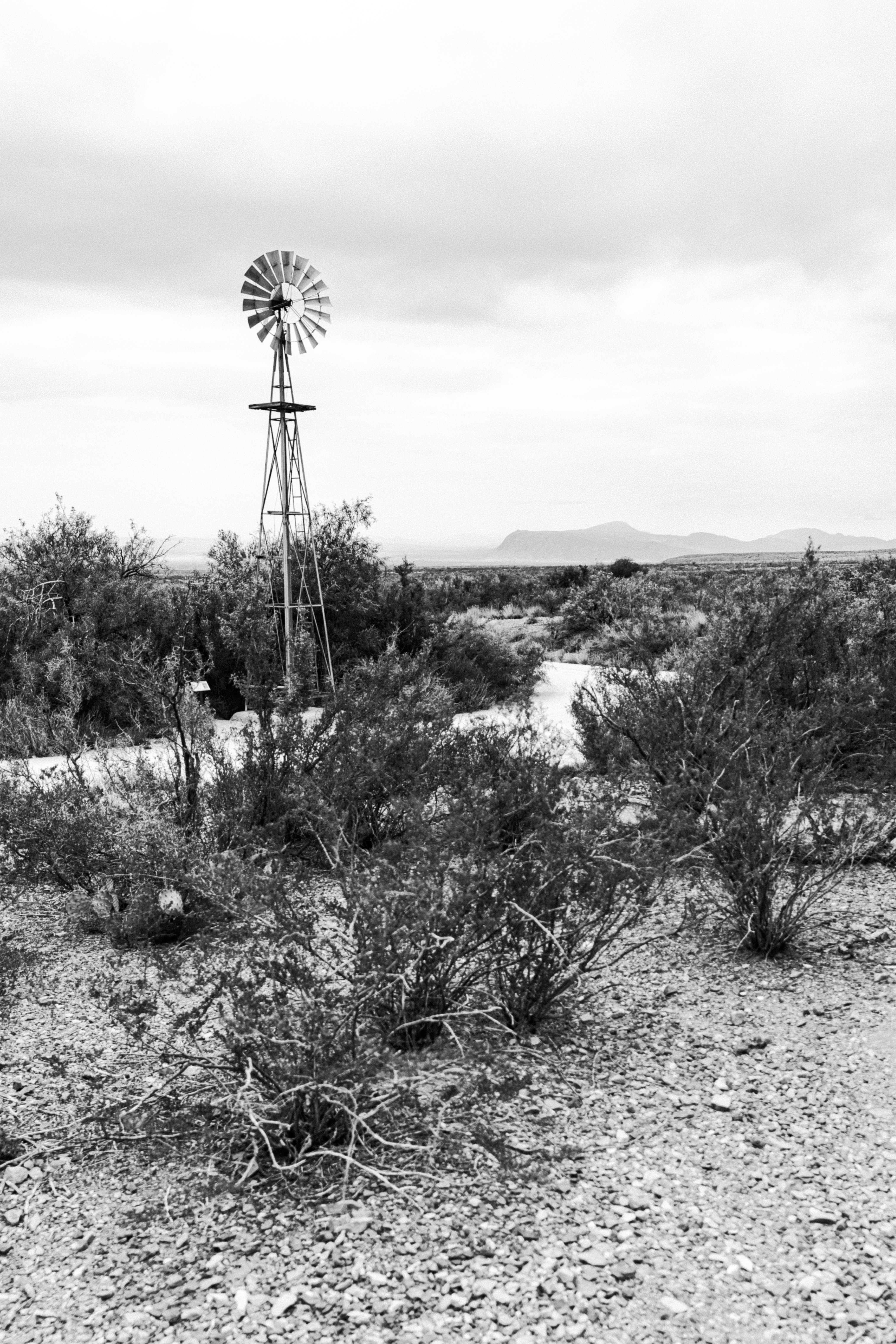

I then recommend moving on to the Rio Grande village Nature trail. This is another short, approximately 1 mile, easy trail popular for hiking and walking with views of wild horses, birds, and bears if you’re lucky (or unlucky). It offers beautiful views of the Rio Grande as well.
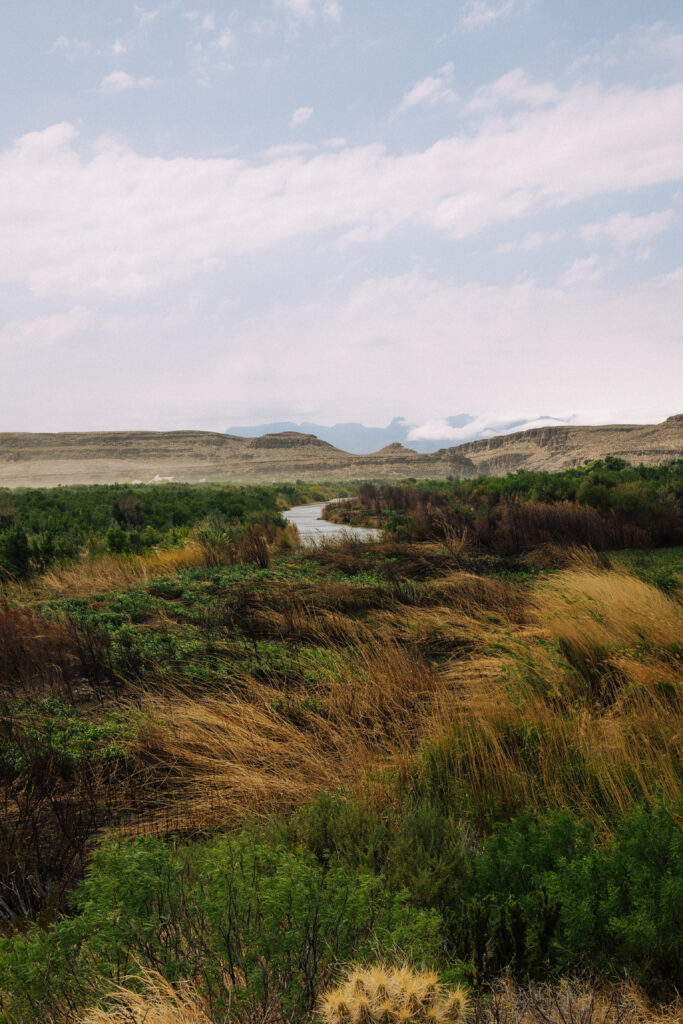
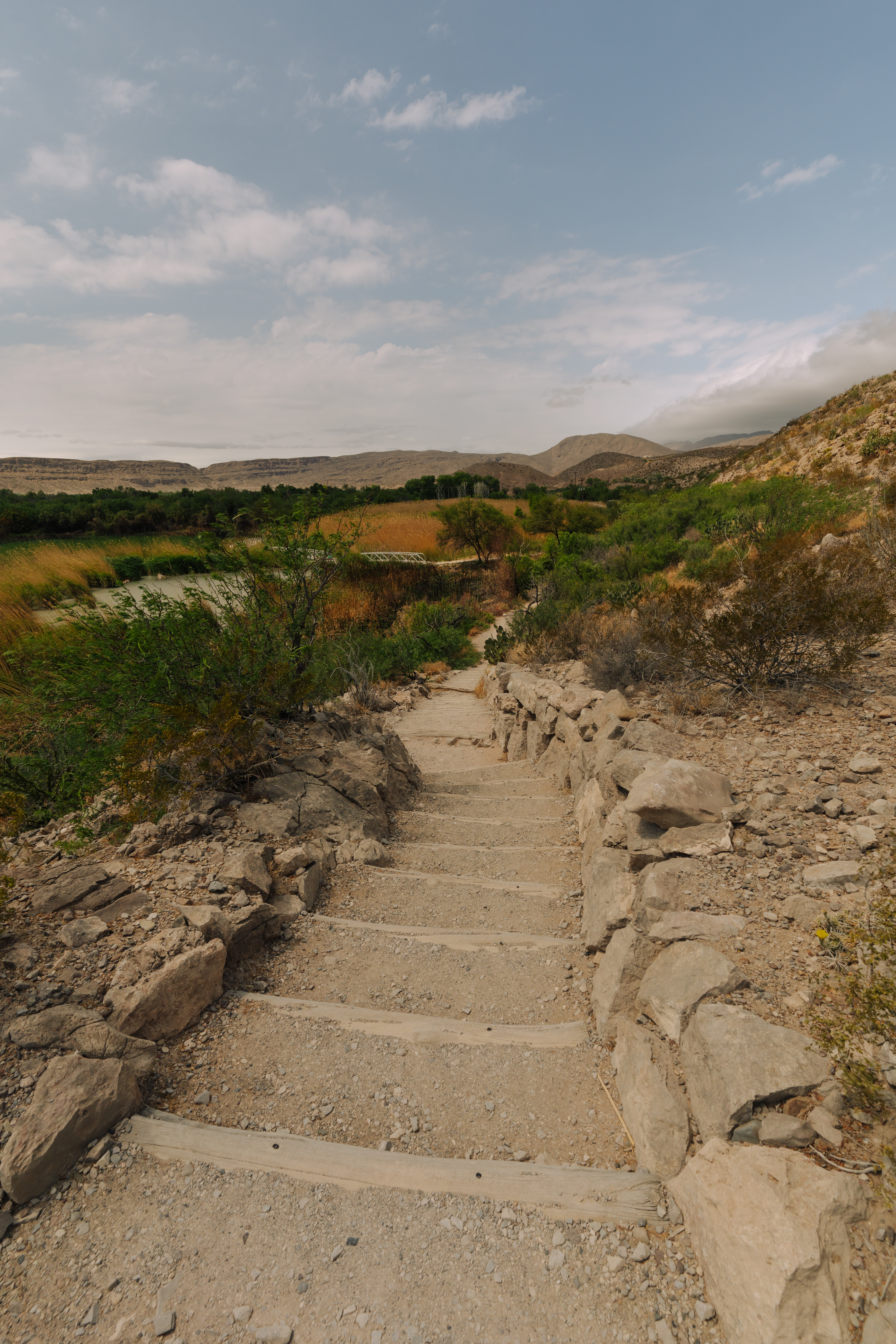
Our day in the park was uncharacteristically very windy and often rainy, so we avoided what would be my next recommendation: The Boquillas Canyon Trail. This is a moderate 1.6 mile hike following the edge of the Rio Grande overlooking the river. We opted to skip this hike and stop at the Boquillas Canyon Overlook with a beautiful view over the Rio Grande, where in the distance you can just make out the Mexican town of Boquillas del Carmen.
Unfortunately, on our trip we began on a Tuesday, and you cannot cross over the Boquillas Crossing Mondays and Tuesdays. That being said I do recommend you bring your passport and plan your days accordingly to ensure you can cross into the town of Boquillas to enjoy drinking margaritas and dining on Mexican fare. You cross the Rio Grande after passing through customs via row boats, at a fee of $5. This is followed by a half mile walk into the town. Ensure you get updated hours of crossing by checking the NPS website before your trip.
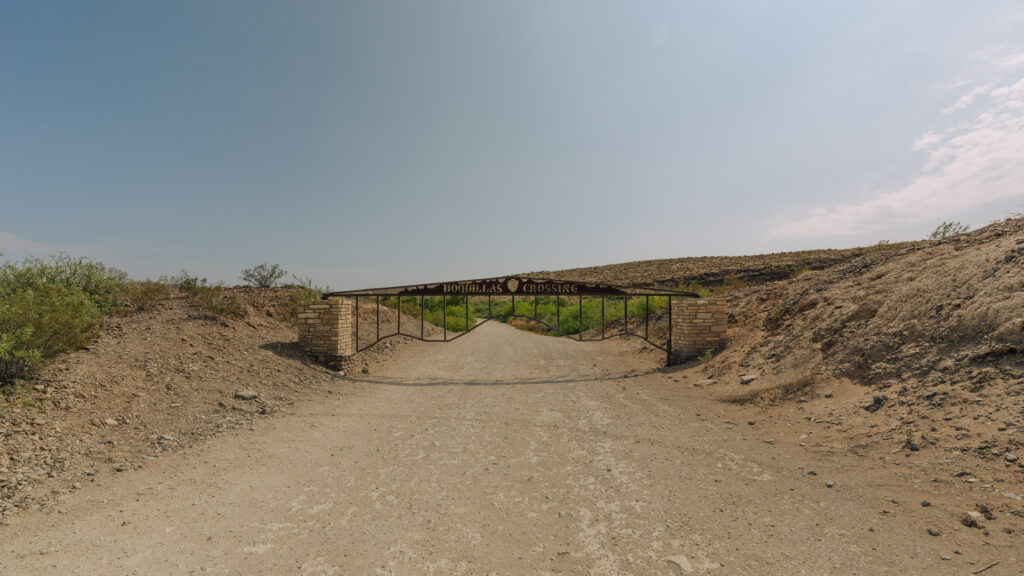
Finally, end your day at the Rio Grande Hot Springs. The springs are an easy short 1 mile walk down the trail. Bring your sandals and bathing suits, as you are able to relax in some natural springs. I encourage you to bring some snacks and a blanket as it is an excellent area to picnic as well. Be sure to check the status of this trail as flooding in summer 2022 caused the trail to close until further notice. Finally return to Terlingua and enjoy a bowl of Chili and a beer at the Starlight Theatre.
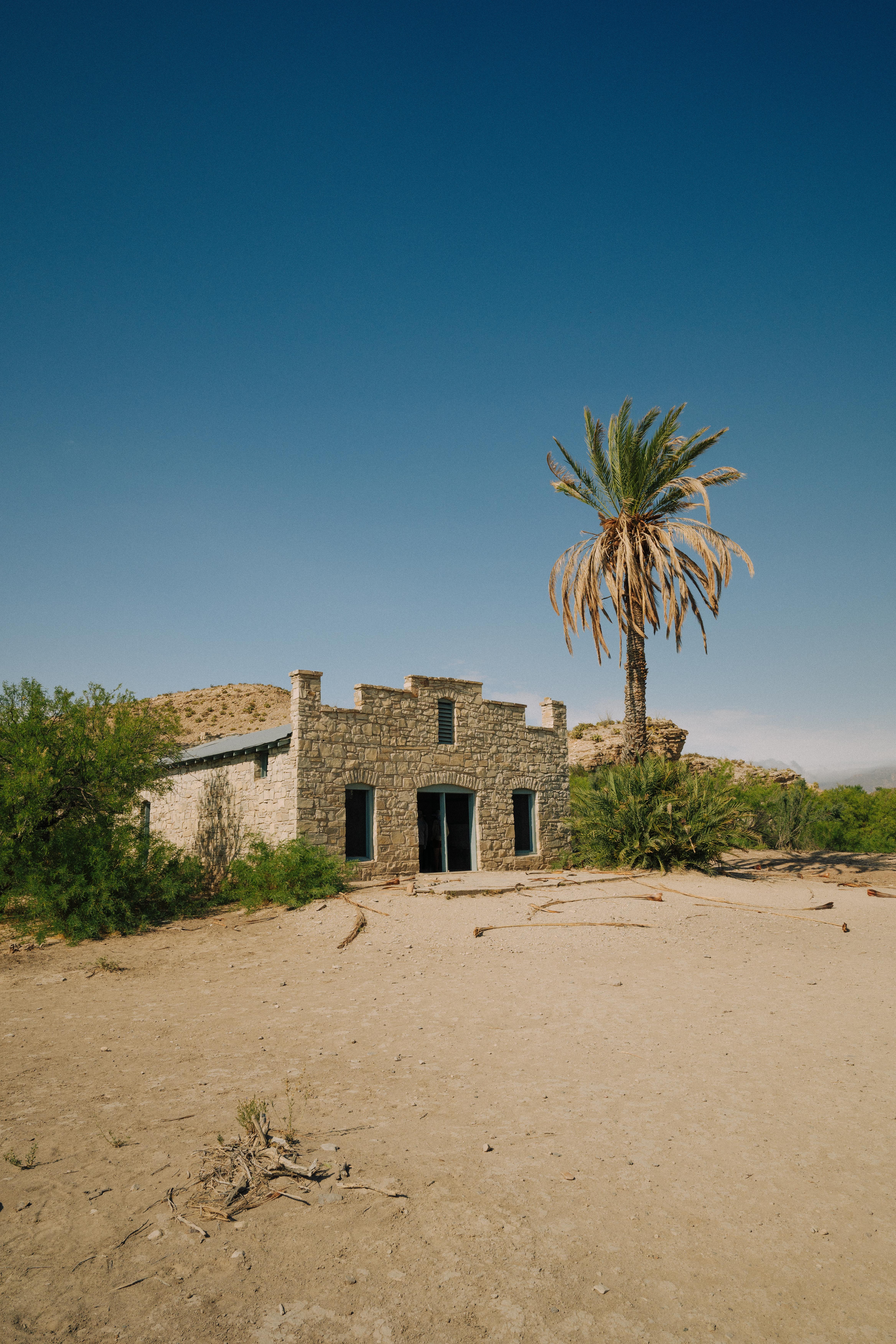
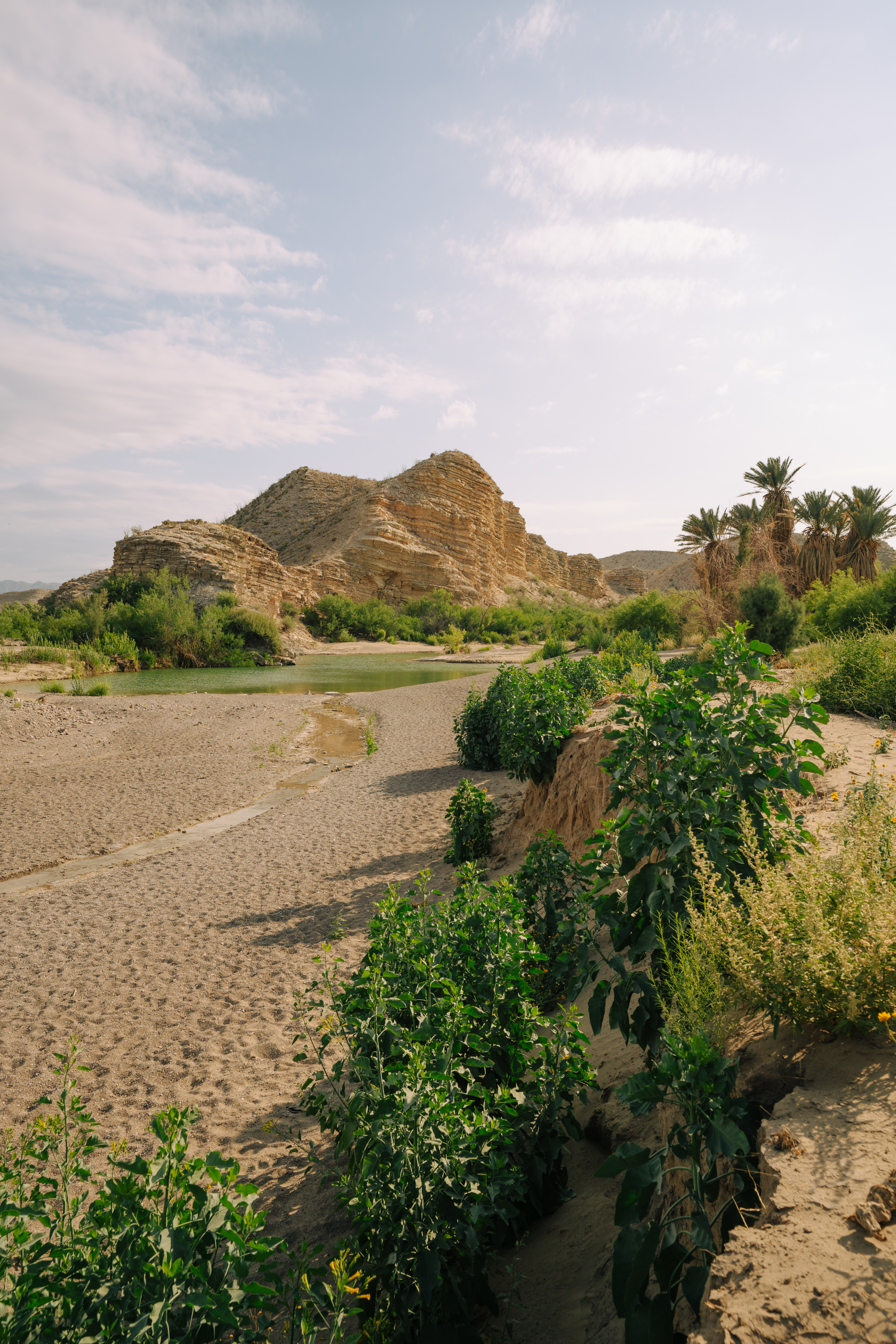
Day 2: Ross Maxwell Scenic Drive
Every drive through Big Bend is scenic, but this 30 mile stretch through the park has earned its place as the most beautiful drive in the park. For those not interested in hiking you could stay in your car, in your cool A/C, and see plenty. That being said I highly recommend wearing your hiking boots and getting out on the trails and overlooks.


My wife and I started our day leaving Terlingua after some iced coffees and a breakfast of Tacos and eggs benedict at Espresso Y Poco Mas and headed out onto the Drive. Our first stop was all the way at the end of the typical drive, One of the most famous sites in Big Bend National Park: Santa Elena Canyon. Feel free to stop at the Santa Elena Canyon overlook on the way in to get a more zoomed out view of the canyon you are about to experience. The Santa Elena Canyon hike is an easy to moderate 1.7 mile hike along the Rio Grande that has a brief elevation gain early in the hike. The view of the canyon at the start of the hike is incredibly impressive. Bring water shoes or sandals as there are areas where you can walk across the river. For those adventurous types, there is the ability to canoe down the Rio Grande by booking a guided trip through Big Bend River Tours. Although we started our day here, in order to avoid the mid-day heat as the canyon gets quite hot, it certainly makes sense to make this the last stop of your day given its location at the end of the scenic drive.
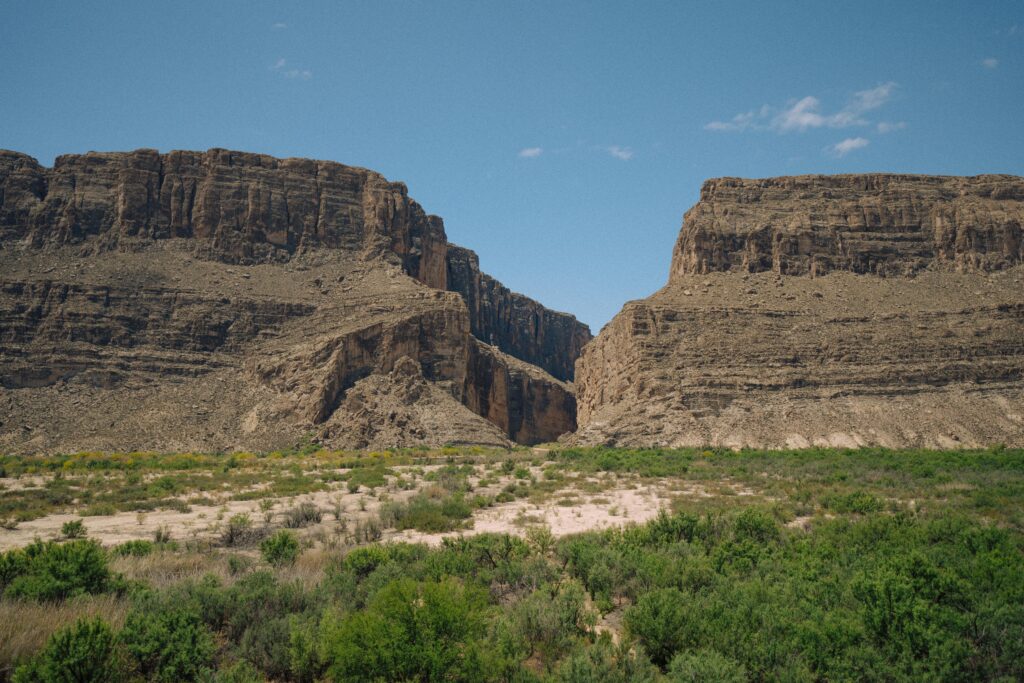
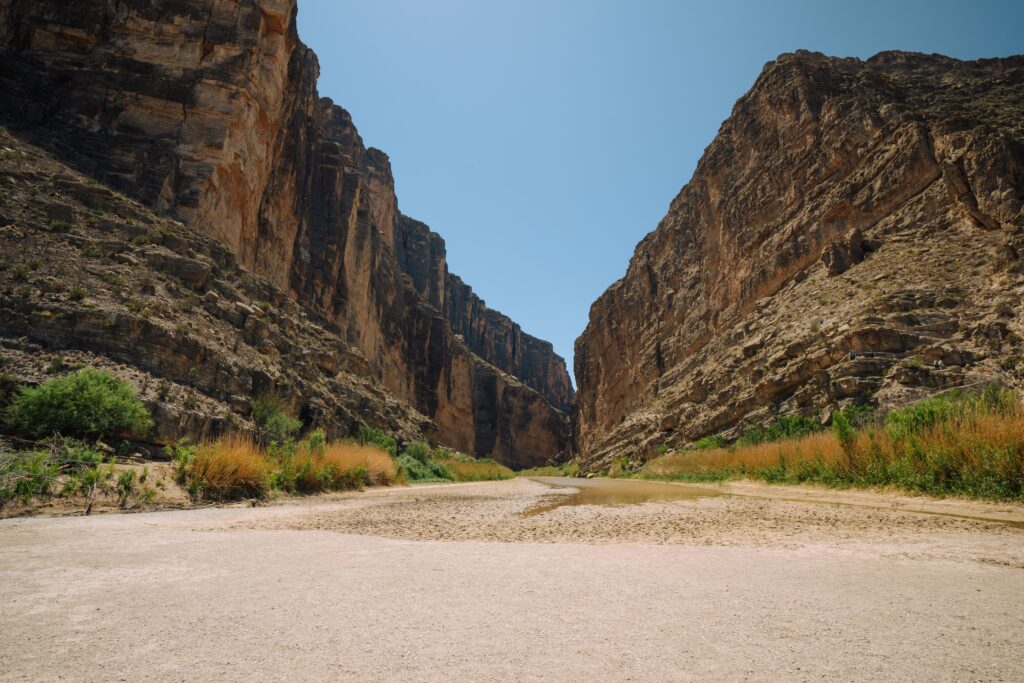
We then stopped at Tuff Canyon. There is a short ¾ mile walk to a viewing platform where you can appreciate how years of flash floods carved the canyons smooth walls. We were happy with our overlook of the canyon but you can certainly consider taking the Spur Trail and hiking deep into the canyon as well.
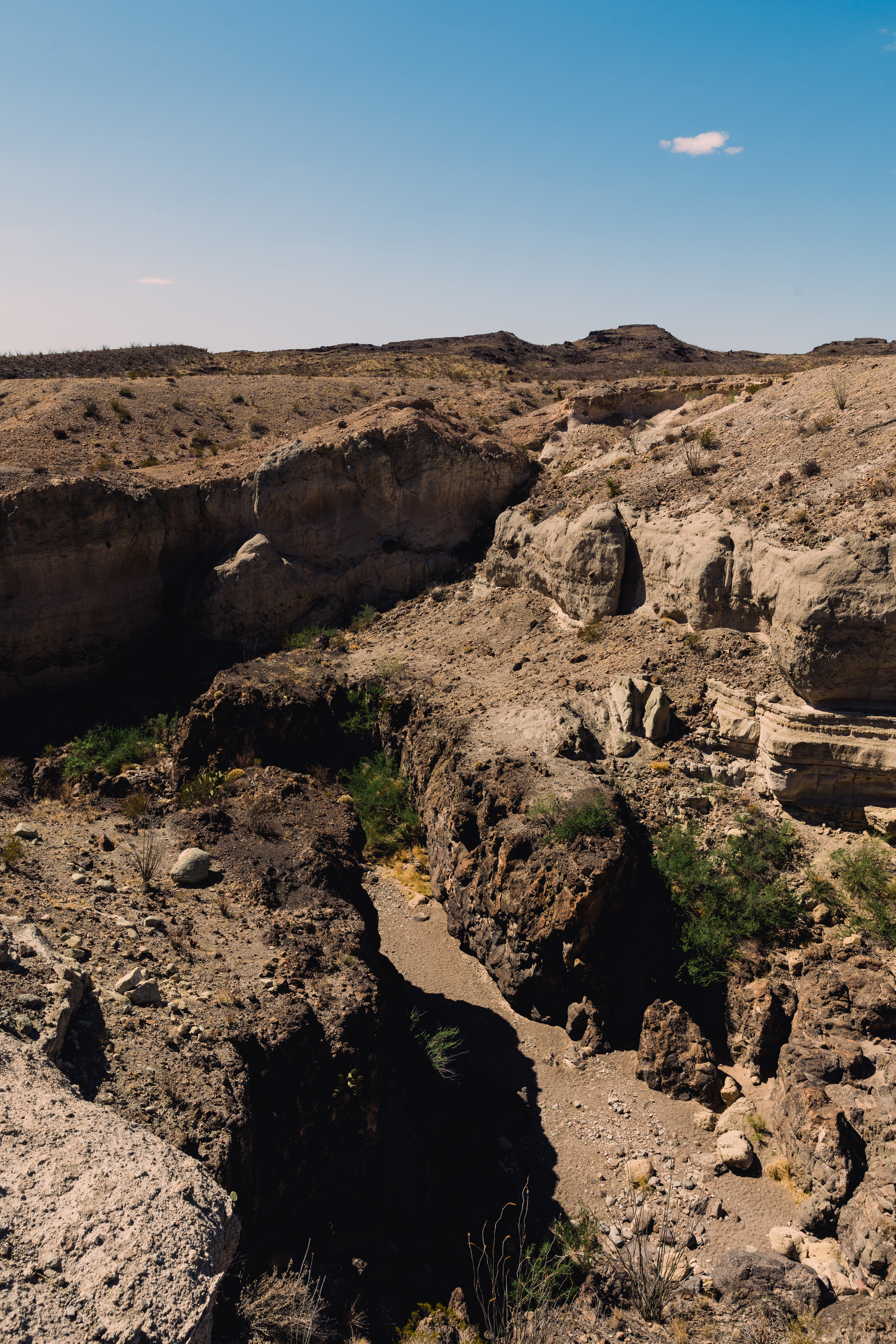
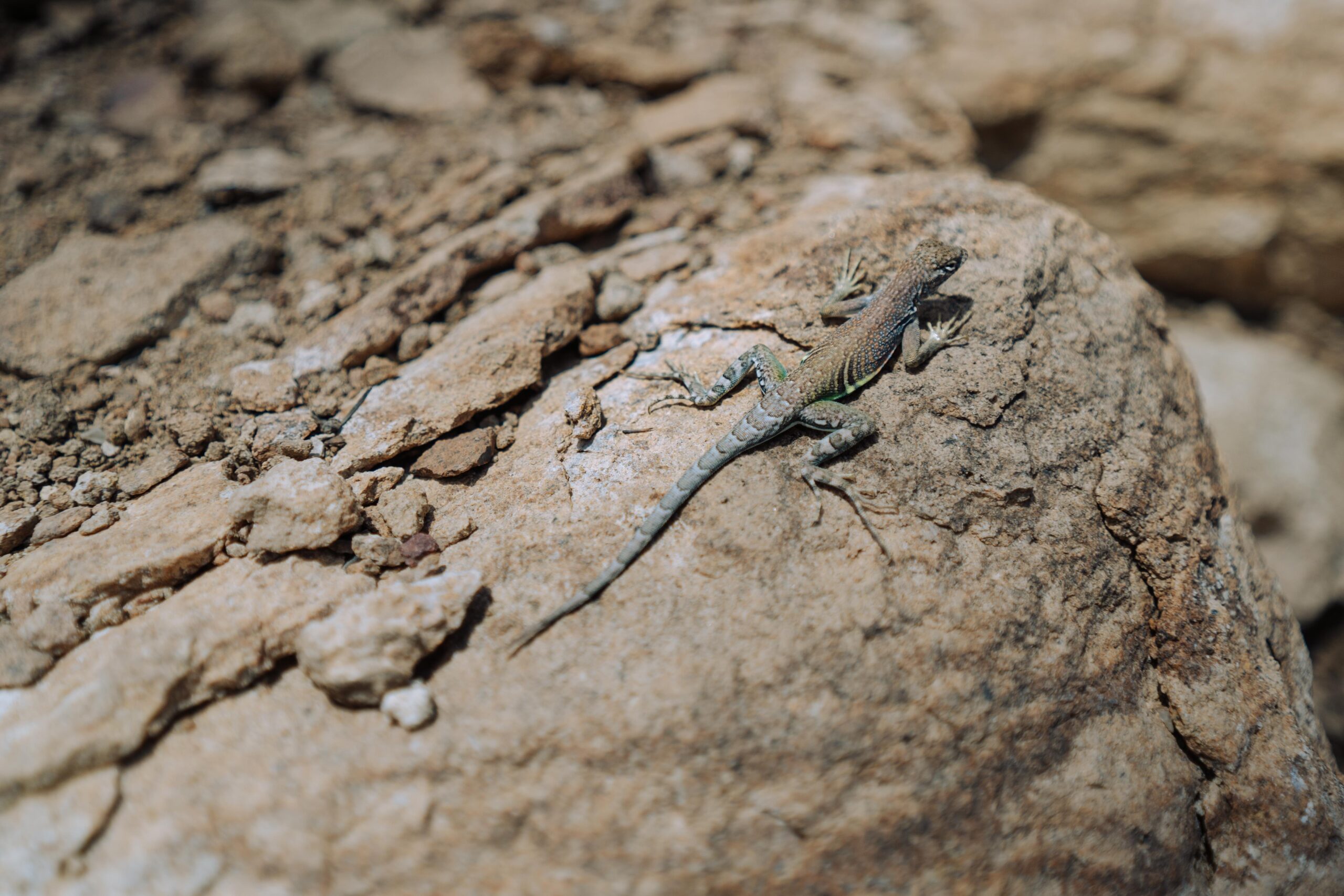
During the drive we pulled over multiple times at clearly labeled viewpoints and overlooks. We were able to appreciate wild horses and free roaming cattle throughout the drive as well.
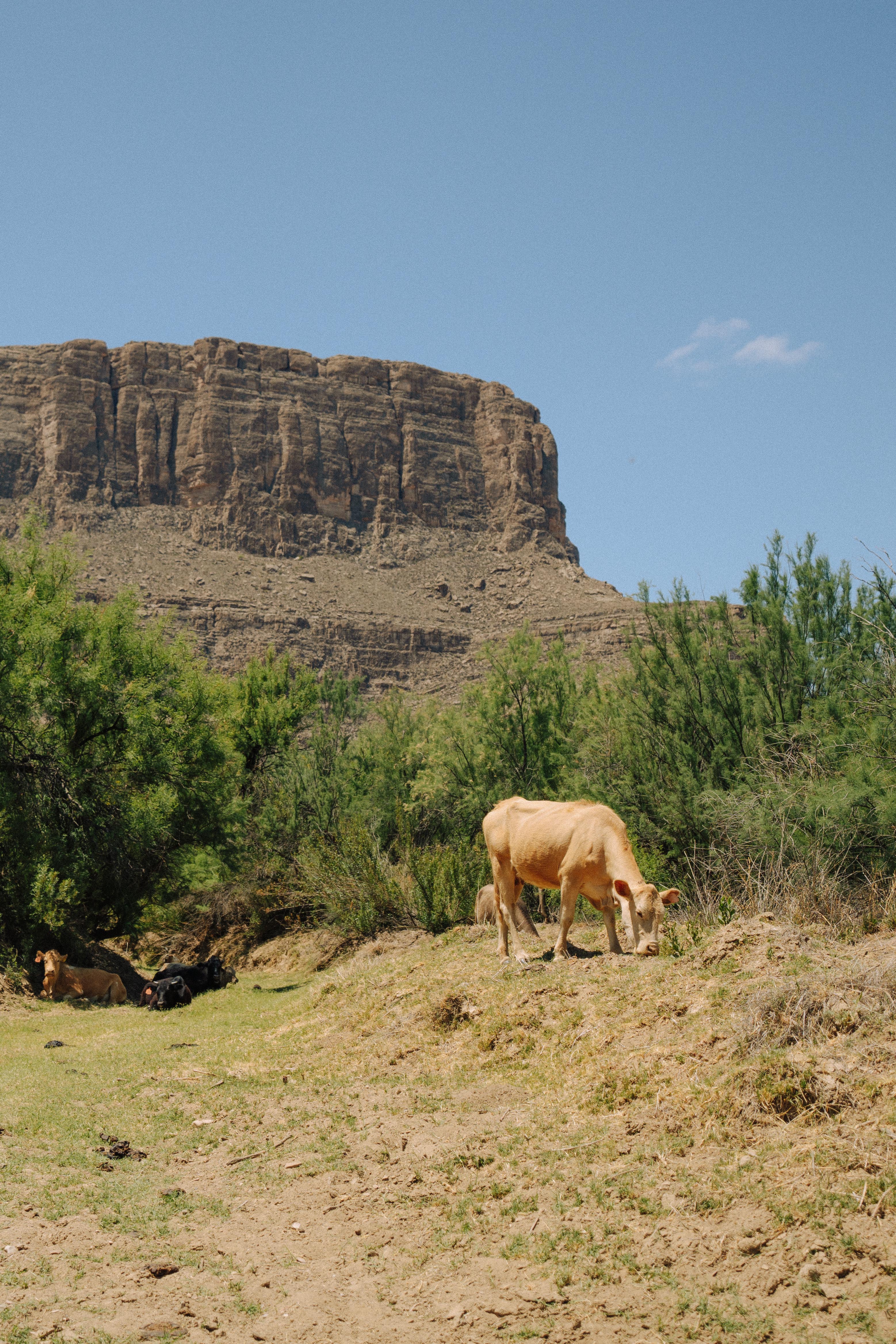
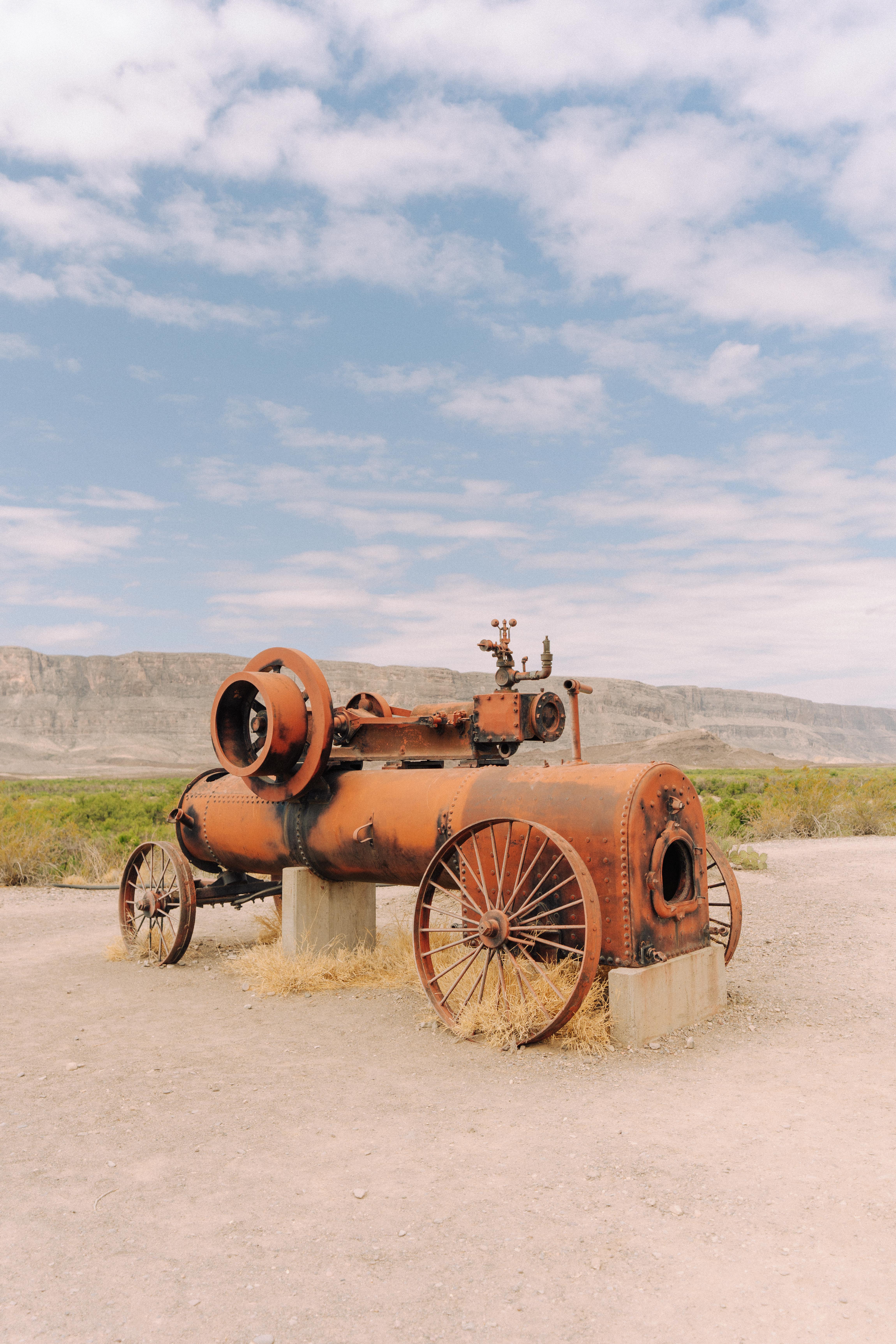

We ended our site seeing during the Ross Maxwell Scenic drive day at the Lower Burro Mesa Pour Off. This is a quick, flat, easy hike through a large canyon which ends in what seems to be large rock wall. This is the Burro Messa, an area where water throughout much of the park will pour off during flash rainstorms. We had this trail completely to ourselves, and noted signs that mentioned active mountain lions in the area. While we didn’t see any, just be sure to keep your eyes peeled.
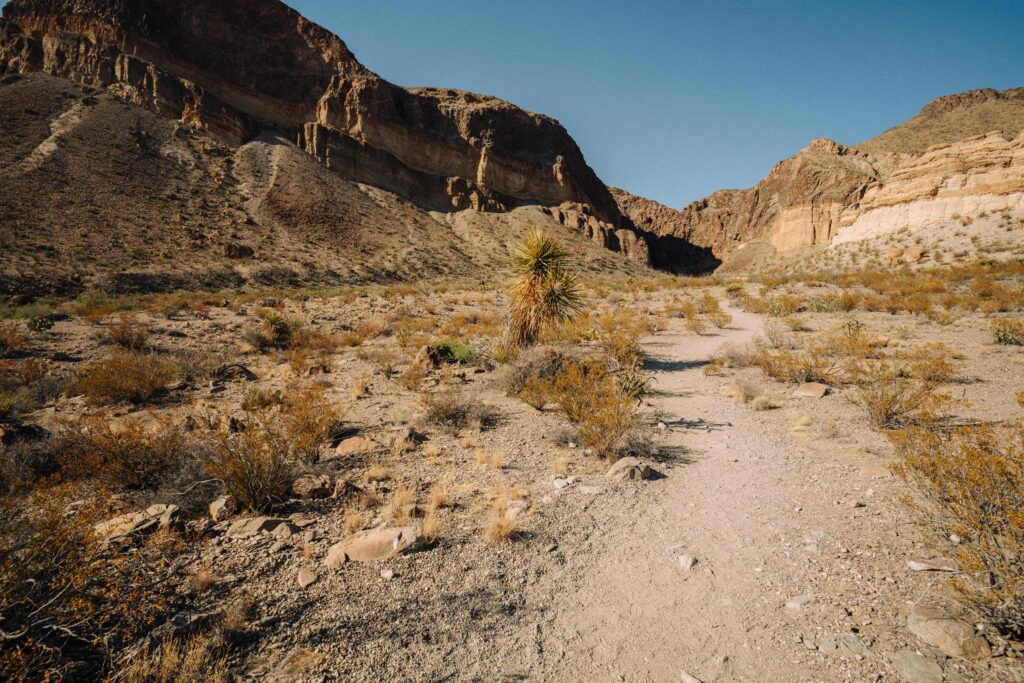
To end the day we checked in at Chisos Mountain Lodge for our last night in the park. We soon learned that black bears have become active in the park, and we ran into one right in the parking lot. We enjoyed dinner and a beer at the attached restaurant and saw the sun getting low in the sky. We quickly took the quick 0.3 mile Window View trail (a short paved path) to view a cut-out area in the Chisos Mountains to view sunset. Although it was spoiled a bit by clouds its certainly a beautiful point to watch sunset. We then turned in for the night.
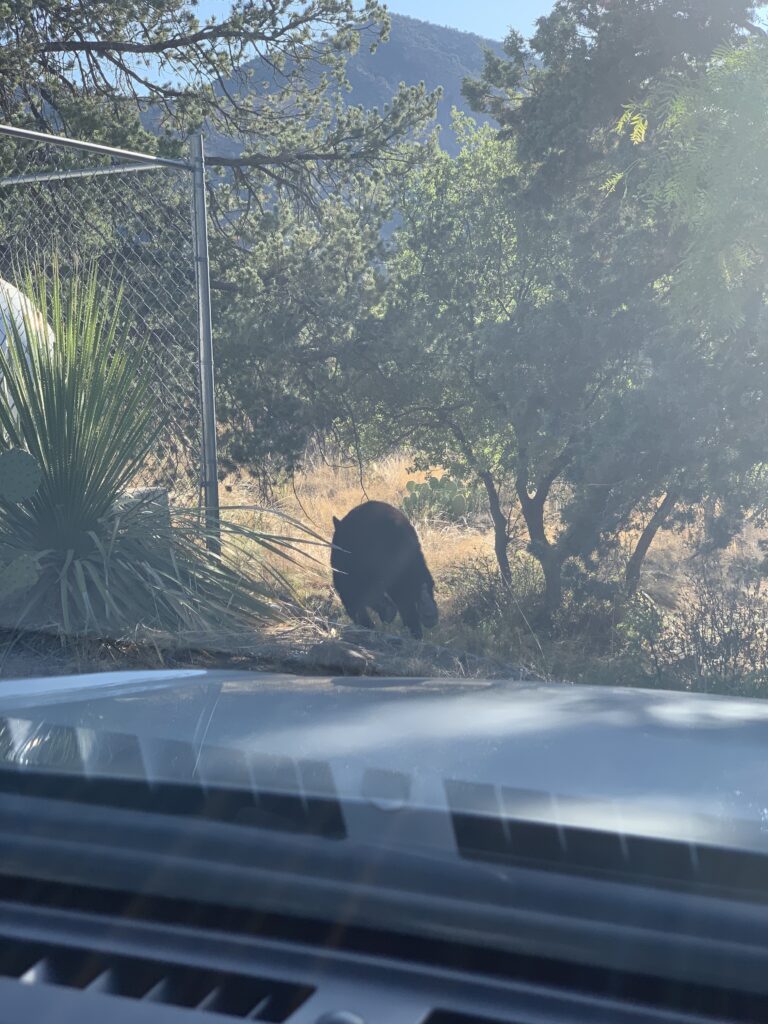

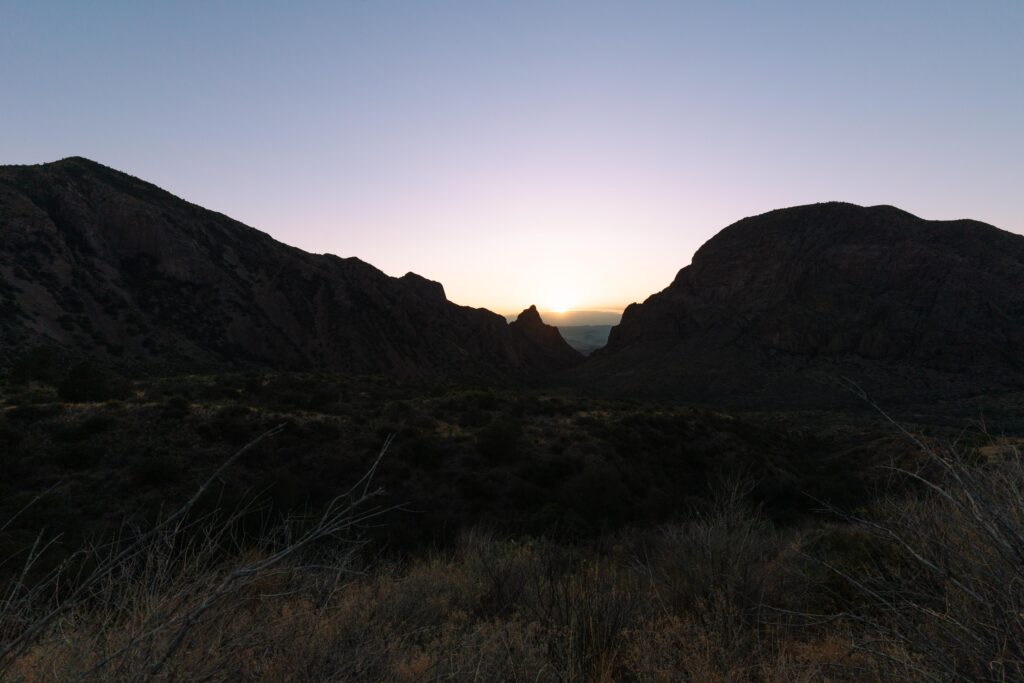
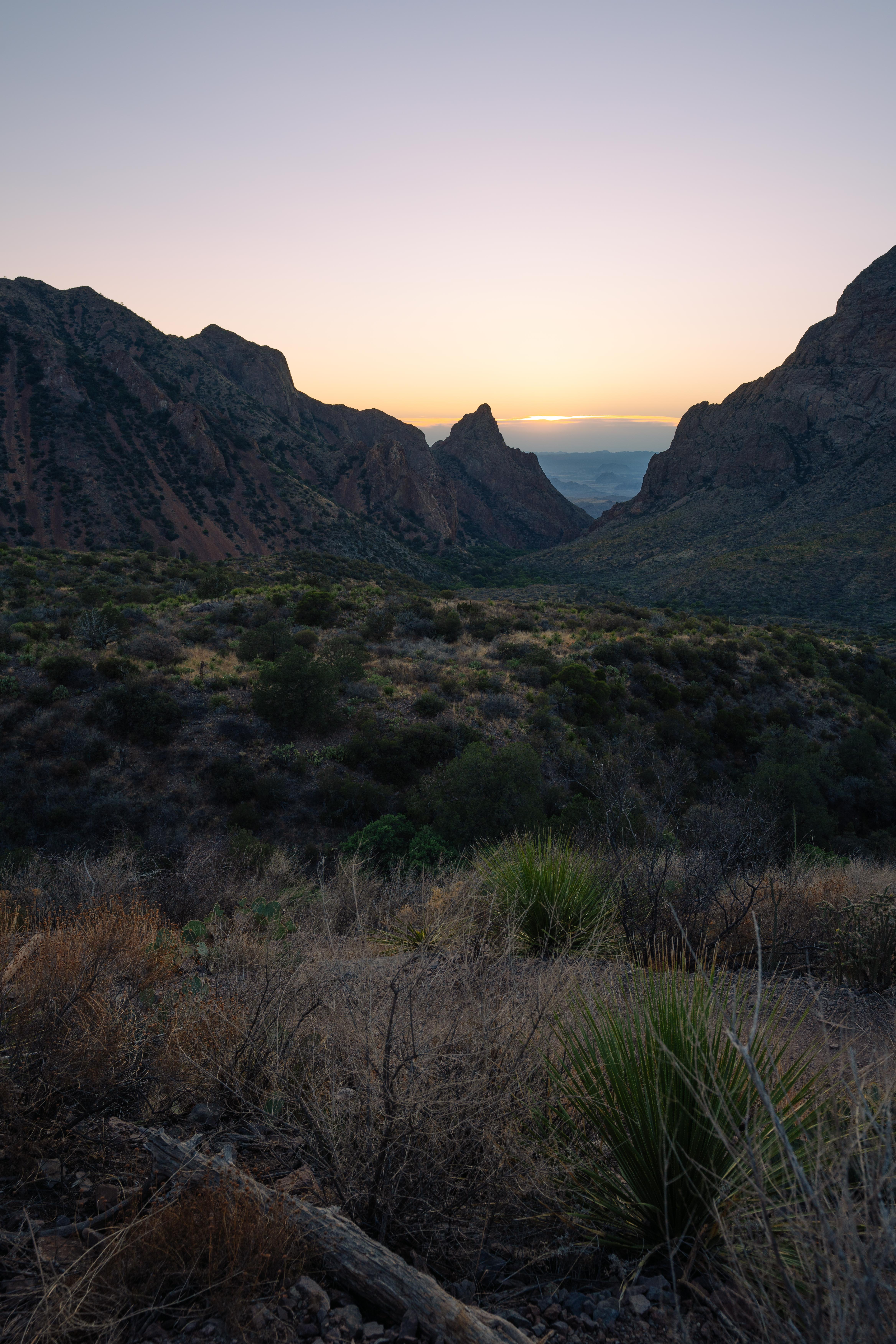

Day 3: Chisos Basin
I think this was my favorite day of the trip, and if you love early morning hikes, unique rock formations, and panoramic views, it may be your favorite as well. We heard that trail head parking fills up very early so we started the day with our headlamps before sunrise at the Lost Mine Trail. This is a trail about 5 miles in and out with a slow steady climb. When you get above the trees you get beautiful views of Window View and panoramic views over Big Bend National Park. This took us around 3 hours and by the time we got to the trailhead again around 9-10am the parking lot was full, so definitely get there early. Other trails you could consider, that we did not do ourselves, to start the morning include The Window Trail, Emory Peak Trail, and the South Rim Trail, as always check the status of these trails on the NPS website to ensure the trails are open as recent increased bear activity has caused some of these trails to close in recent months.
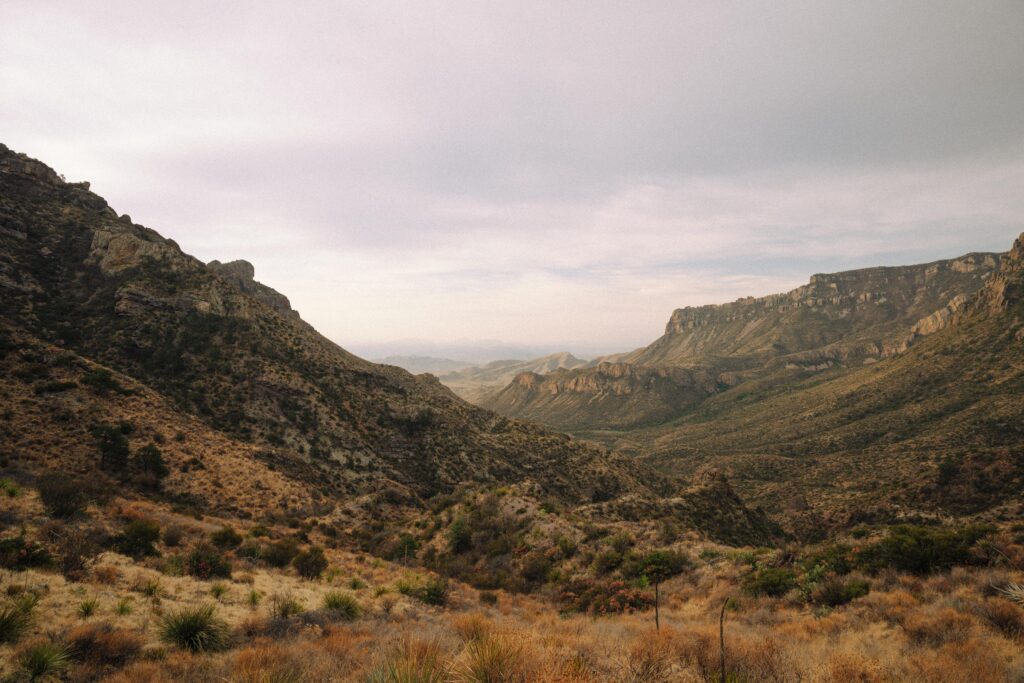
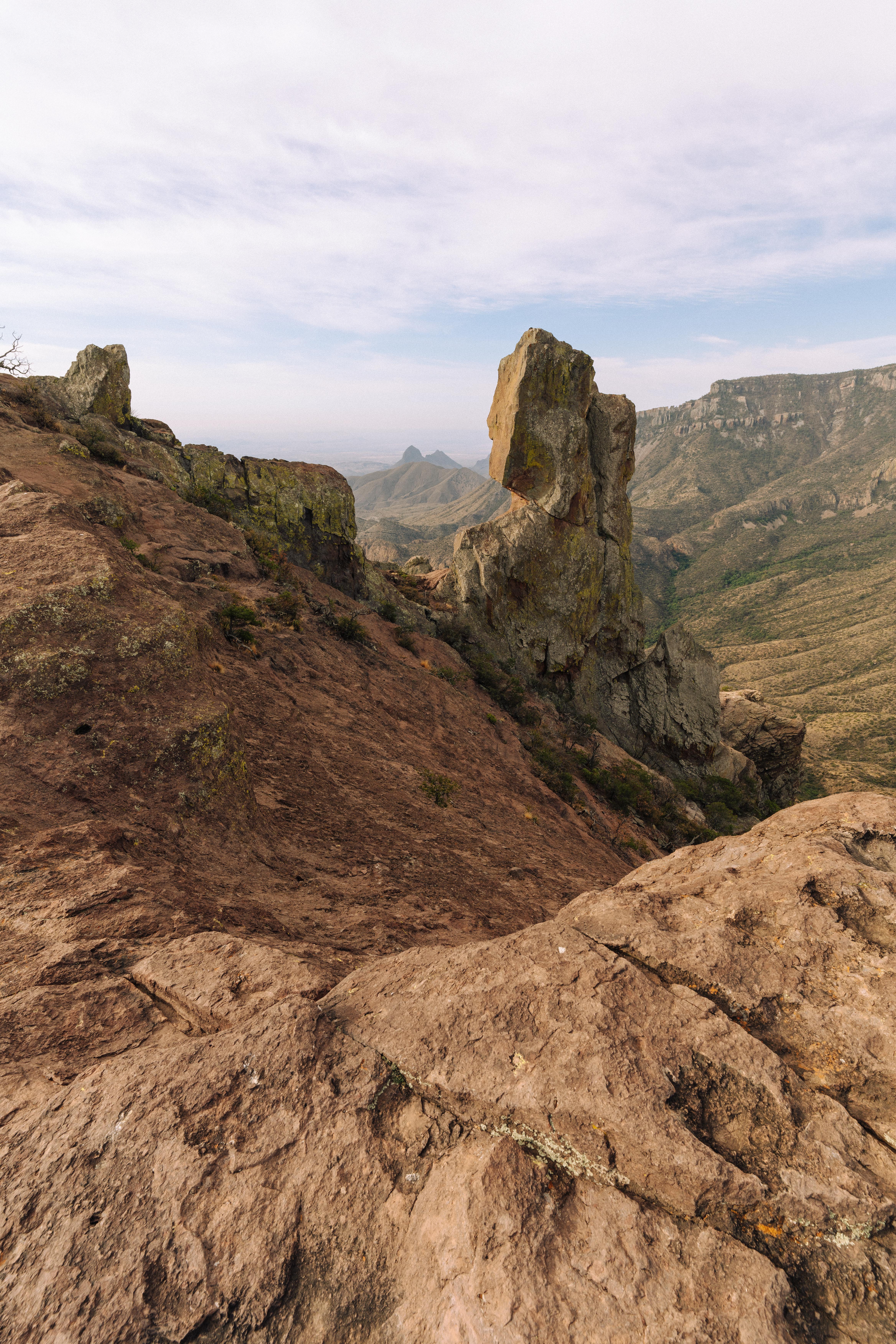

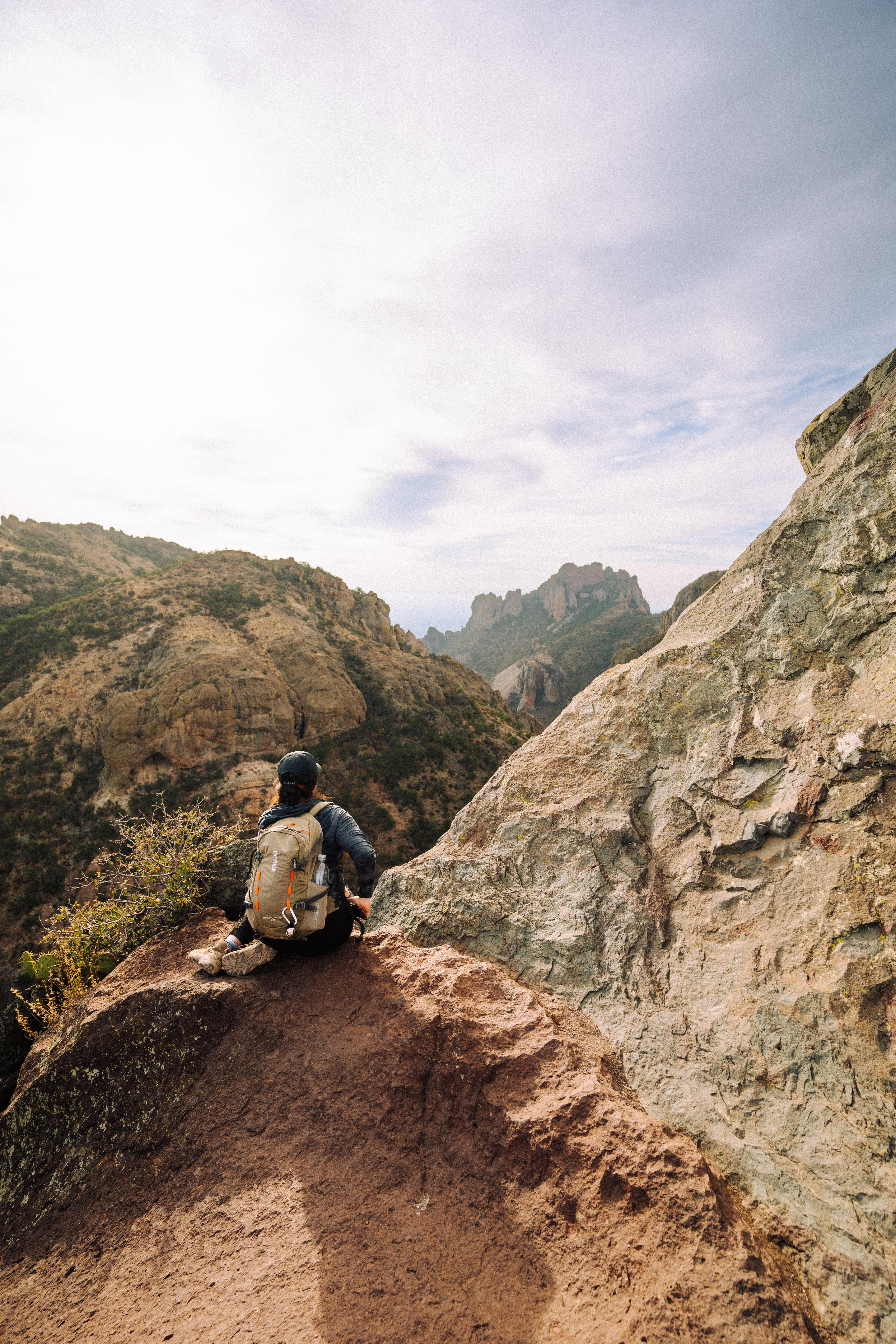
Finally, we ended our day driving to Balanced Rock. Balanced rock is one of the iconic rock formations of Big Bend and certainly any photographer will need to stop here. Be warned, the road to balanced rock is a bit tough, 6.3 mile gravel road called Grapevine spring. The park recommends an SUV or a vehicle with high clearance as there are multiple areas of washout that have led to deep pits in the road. We did notice cars as small as a Volkswagen Jetta that seemed to make the trip but it will certainly need to be taken very slow. There is a parking lot at the trailhead The beginning of the hike is very flat and easy for about ¾ mile followed by about ¼ mile of some steep climb and scrambling up the boulders on the path. The trail then ends at balance rock where you can get beautiful and unique photos. Watch for snakes on the path and you’ll be fine!


We then stayed in a unique off the grid adobe home found by my wife via Airbnb. It was incredibly secluded and unlike any place we had stayed before. It has a/c units but the dome itself seems to regulate the temperature well and we didn’t need to use it. I highly recommend staying in at least one unique place like this on your Big Bend trip!

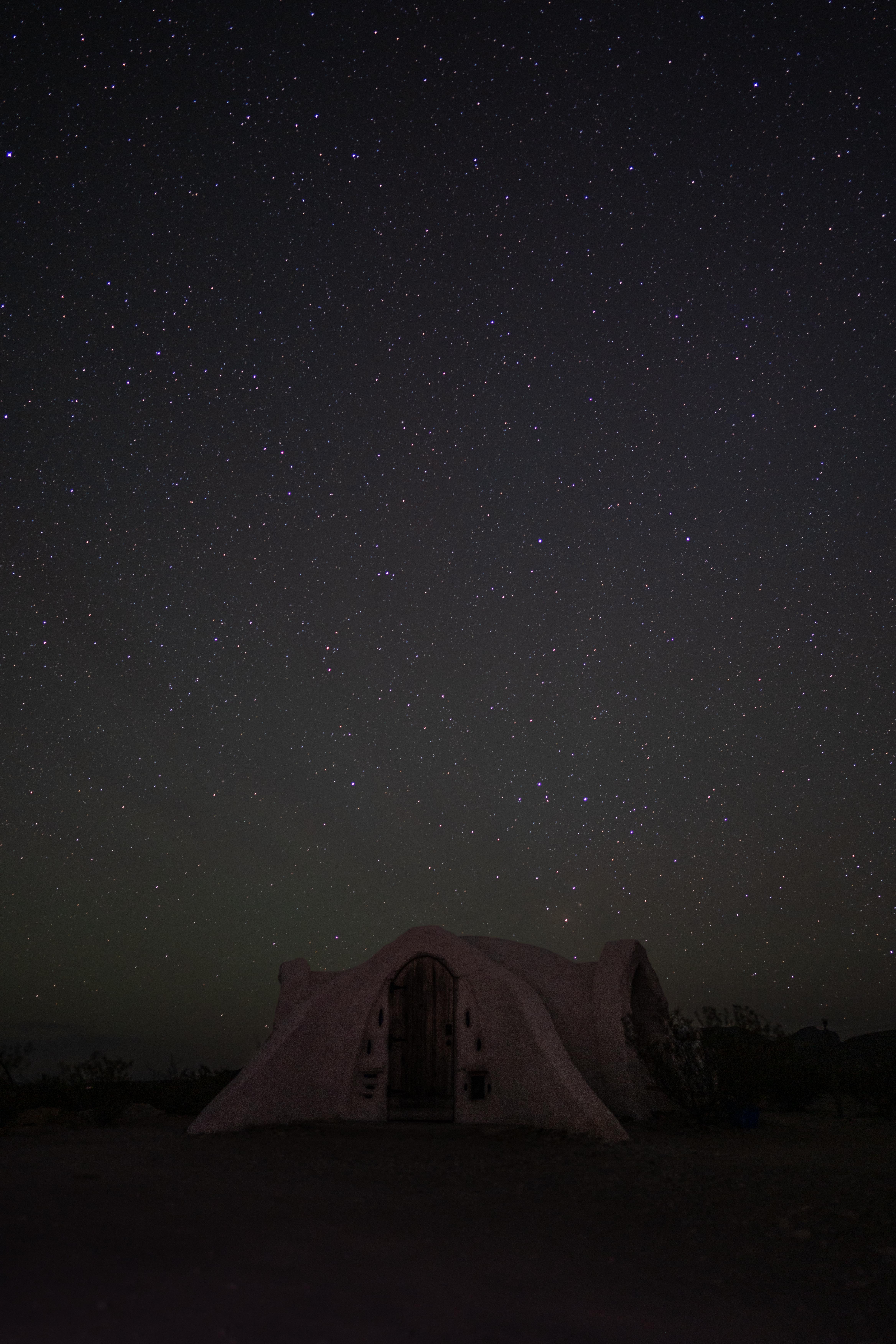
Safe travels around the bend!